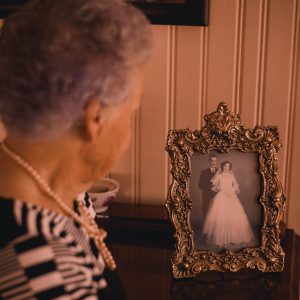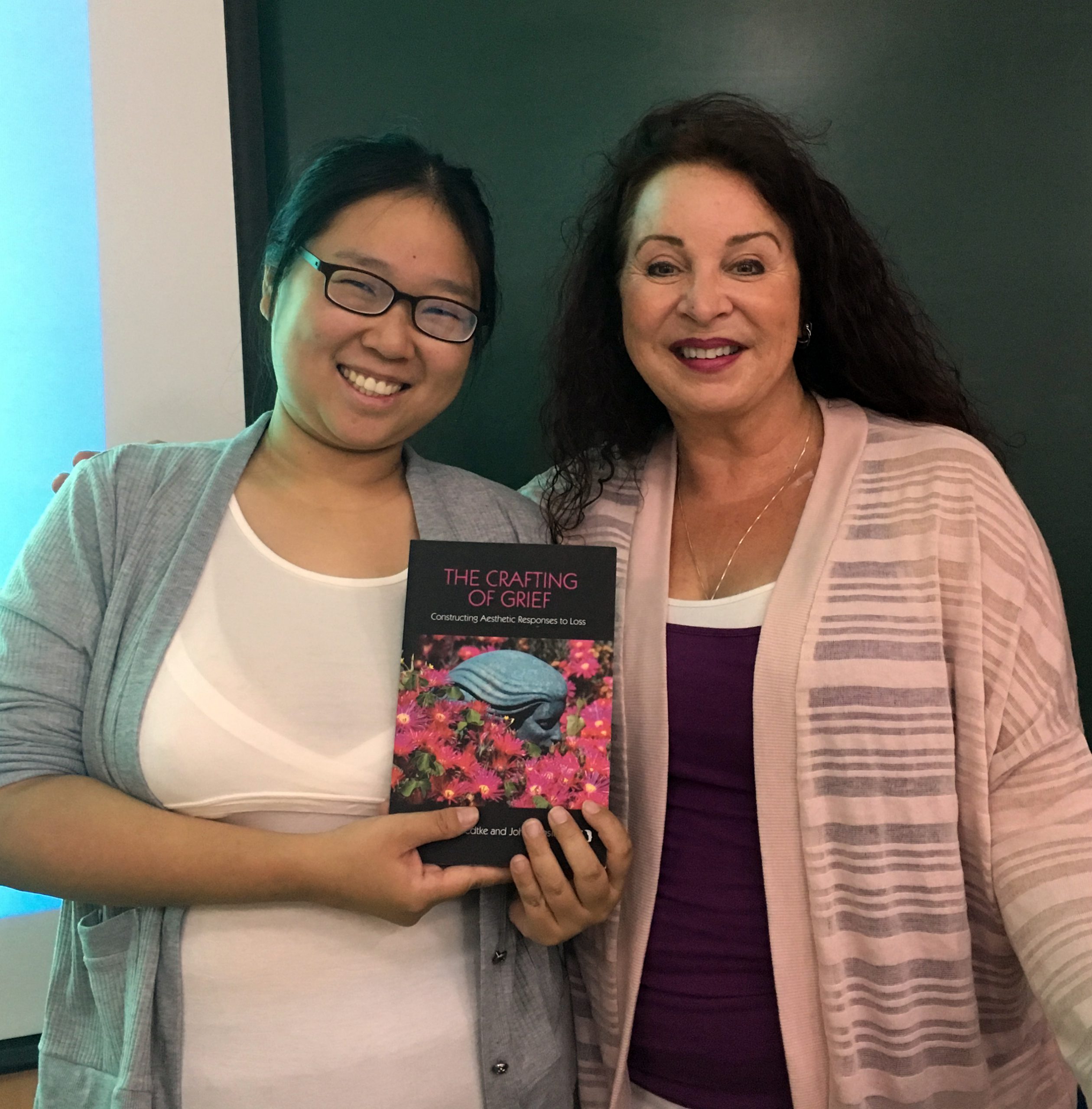
In her moving chapter, From an individualist to a relational model of grief*, Dr. Lorraine Hedtke lays out a path from old and outdated models of grief psychology that no longer serve us as individuals to new and exciting communal ways to keep our relationships with our deceased loved ones alive, by encouraging those living with grief to continue to engage with the stories and memories of the people who are no longer alive, but continue to live in our hearts, stories, and connections.
Read selected edited passages from the chapter below. Click here to download the full essay. The full book, including many exciting contributions on theory and practice of social constructionism, can purchased here: The sage handbook of social constructionist practice
For the last one hundred years, modern grief psychology has been dominated by a model focusing mostly on the individual experience after a person dies, encouraging the surviving loved ones to find closure, so they can move on. The overarching themes built in to modern grief psychology took root in Freud’s article, “Mourning and Melancholia” (1957/1917), in which he outlined normal grief as a practice of letting go in order for the mourner to step into a new life without being haunted by the ghost of a dead person.
In this model grief was thought of as an experience much like a cold, where the bereaved can expect to be free from troubling symptoms with a certain series of time-limited anticipated effects. For the dead however, the practices Freud’s work set in motion effectively silenced their stories and love by burying those narratives and emotions alongside their bodies. Since the time Freud declared the grief-stricken party was remove any residual connections to the deceased, voices from beyond the grave have been relegated to the supernatural. Counseling models have followed this realist view, prescribing a practice that pathologizes talking about the dead, let alone talking to them.
Theoretical practices in modern grief psychology like the Kubler-Ross ‘5 Stages of Grief’ have been intimately tied to medical practice, placing emphasis on the corporeal as proof of relationship. The denial of the emotional acceptance when a person dies has been largely measured by the letting go of the body. The intersection of completion of relationship has been expected to coincide with the last exhale, at which time the bereaved should be emotionally adjusted to the death of the connection. Not accepting the relationship has ended or insisting on continuing a relationship of sorts is regarded as abnormal. Subsequent models of modern grief psychology all built on themes requiring letting go, in a timely manner, that not only dislocated the relationship, but also removed the context and caliber of the connection.
What is a Relational Approach?
A different kind of conversation might entail appreciating what was important to the deceased and points that can be established for ongoing and new purpose. To this end, another approach to grief counseling is needed — one that affirms the best of what relationships have to offer and is supported by research which indicates that meanings are made in a social and familial context, rooted in multigenerational legacies.
This new relational approach offers a revolution to change how grief is storied, weaving the stories of the dead into the lives of the living. Acts of recalling the best of the past, transcending the limits of linear time, and remembering the past as a building block can create a soothing balm for a continued sense of connection in the face of sometimes devastating loss. This approach invites ongoing relationship not only between the dead and their immediate living person(s), but also takes place in a larger community of people known and unknown to the deceased – people who become the conduit for the deceased person’s past stories. The dead can be introduced to new people who can then carry their jointly owned stories.
Re-membering and Membership
Postmodern thought has opened new ways to think of identity and the self as living in multiple spaces, voices, and as a fluidly constructed experience. Rather than upholding the old adage that people are born alone and die alone, postmodern thought might posit that we are all born into an interconnected web of people, living and dead. While that might seem like a riddle, it suggests the dead can continue to hold a relational position in the hearts and stories of the living. No longer do they need to be banished to the cold cemeteries but can warm our hearts as we tell their stories again and again and in so doing, find a way to move forward with the dead alongside us. This shift from isolated individual to a self situated within a community was articulated by the anthropologist, Barbara Myerhoff (1978; 1986). Myerhoff’s suggests a new way in which identity can be formed and authenticated.
A “re-membering” conversation acknowledges that a person’s importance, or membership, in Meyerhoff’s terminology, continues to be viable and accessible after death. This re-membering conversation offers re-inclusion of the deceased person’s former stories as opportunity to weave meaning between the living and the dead. Re-membering also then becomes a springboard into future, unchartered waters, into which the bereaved dives.
Thus, a re-membering conversation does not only rely on a realist’s version of relationship to demand completion at the time of death but can enlist conjecture about what the deceased person could say if they were still able to speak. This frees the bereaved to have a more fluid connection with the deceased that does not reify a prescribed model of stages or tasks required for successful grieving.
What does a re-membering conversation look like?
A conversation that remembers a person who has died inquires a bit about who the person was before he or she died as the foremost importance. Mental health practitioners need to have a sense of being introduced to the deceased to establish context and tenor of the life and death of the person.
In the following excerpt of a re- membering conversation, Cameron spoke to me about his deceased Grandmother, whom he affectionally called G-Ma. In the first part of this conversation, we can notice the evocative images as a result of questions that are introducing his precious G-Ma.
Cameron: My Grandmother used to sign her FB posts, G-Ma, so we would also call her G-Ma.
LH: Can you tell me a little bit about G-Ma? What did she look like?
Cameron: Ever since I was a kid, she was a very large woman. She had short gray hair. She would wear those Moo-moos because she basically was at home all the time with mobility issues. She’d be at home putting around on her little razor in her Moo-moo or going to bingo or she’d be in the kitchen. She had a necklace –
she called them “her purdy’s.” So we [the grandkids] would want them to grab them and she’d tease us and say “Don’t touch my purdy’s.”
LH: What kind of necklace were her purdy’s?
Cameron: She loved charms and there are all kinds of charms. She loved elephants, so there were elephants. And sayings, like, “I love my grandkids.” She just had like handfuls of little charms that were in her necklace and she basically was into bling.
LH: Did she also bling out in terms of colors? Like bright colored Moo-moos? Cameron: Yes, usually royal blue and purples. And flowers!
LH: So, she was visually quite stunning. How did she sound?
Cameron: She was quite firm with everybody, but she also has a voice that was really soft and quite inviting. Particularly when she was talking to us. But when we would have a friend over, she would be like, “Is HE staying for dinner?” But for us, it would be like [in a soft voice], “Can you please help me cook?” She was very nice to us.
How is this a different kind of conversation?
When we start a conversation that speaks to who the deceased person was, the introduction becomes a political act breathing life into the dead. It is a resurrection of sorts that declares that the dead person matters, which stands against dominant grief psychology models that banish the dead to the cemetery. Introduction establishes a relational approach. The questions are not inquiring about Cameron’s inner emotional experience but declare his grandmother as worthy of noticing.
In this very short exchange with the first three questions, we already get not only a visual sense of G-Ma, but we start to hear some of what is important to her. As he introduces her, he is editing in what he values in their connection. This provides a basis to ask about G- Ma’s values and what they mean for him. It is this meaning that will afford the start of a new kind of connection between Cameron and his Grandmother, one that would be missed if we were to be asking about his acceptance of her death. As we read a bit further on, the introduction quickly morphs into a thread of meaning – of what was important to G-Ma that was shared between them.
Click here to join Lorraine’s mailing list and download the full chapter!
*Hedtke, L. (2020). From an individualist to a relational model of grief, (pp. 455-463). In, McNamee, S. et al (eds). The sage handbook of social constructionist practice. Los Angeles: Sage Publication.
